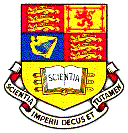|
|
Synthesis and applications of novel chiral macrocycles
|
|
|
Awards and Activities in Chemistry |
|
|
|
The synthesis of large cyclic molecules has always been an aesthetically fascinating, chemically attractive and synthetically challenging task. Our synthetic approach was dictated by the serendipitous discovery of a head-to-tail „Heck typeš coupling reaction of an iodoarene linked to an activated double bond. This, coupled with the idea of introducing chirality using amino acid derived moieties has allowed us to produce a versatile route to a new class of chiral macrocycles.1
Thanks to the possibility of forming „dimericš and „trimericš species with a single reaction (as shown above), we were able to synthesise a large variety of new chiral macrocycles in gram quantities. Numerous applications can be envisaged for molecules of this type; currently we are investigating their potential as chiral ligands for use in asymmetric catalysis. Possessing N, O donor atoms they can bind to a series of metals. Recently interest has grown in the synthesis and characterisation of lanthanide complexes of chiral macrocycles and these are now beginning to be applied in the area of catalysis. We are currently investigating the binding properties of our chiral macrocycles as ligands with rare-earth metal triflates in the catalytic version of the Mukaiyama Aldol condensation.
We anticipate that our versatile approach to the synthesis of these ligands will allow us to modify their structural and electronic properties in order to find the „right fitš with the metal host and to employ them as ligands for numerous RE metal and/or transition metal catalysed reactions.
1. S. E. Gibson, N. Mainolfi, S. B. Kalindjian, P. T. Wright, Chem. Comm., 2003, 1568.
|


